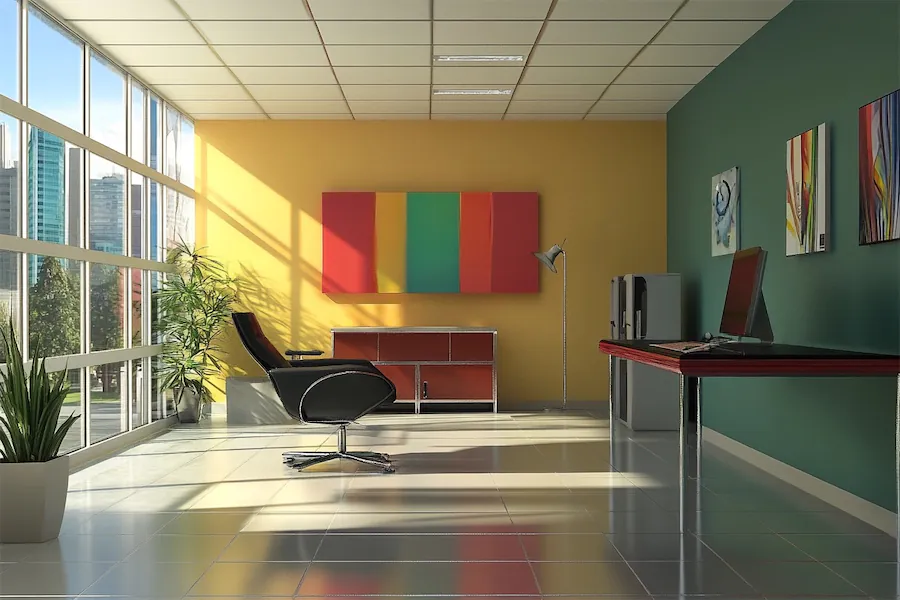A Postmodern office room embodies the eclectic and expressive characteristics of postmodern architecture, creating a workspace that challenges traditional design norms through the use of diverse materials, bold colors, and playful forms.
Introduction to Postmodern Office Rooms
Postmodern office design emerged as a reaction against the minimalism and functionalism of modernist architecture. It embraces complexity and contradiction, incorporating historical references, ornamentation, and a mix of styles to create dynamic and engaging work environments.
History and Origins of Postmodern Office Rooms
Postmodern architecture gained prominence in the late 1960s and 1970s, challenging the rigid principles of modernism. Architects like Robert Venturi and Denise Scott Brown advocated for a more inclusive approach to design, incorporating historical elements and symbolism. In office design, this translated to spaces that prioritize human experience, visual interest, and contextual relevance.
Key Features of Postmodern Office Rooms
- Eclectic Material Use: Combining materials such as glass, steel, brick, and wood to create textural variety and visual interest.
- Bold Colors and Patterns: Utilizing vibrant hues and geometric patterns to add dynamism and break away from the neutrality of modernist design.
- Historical References: Incorporating classical motifs like arches and columns alongside contemporary elements to create a dialogue between past and present.
- Playful Forms: Employing asymmetry, unexpected angles, and whimsical shapes to challenge conventional design norms and introduce a sense of humor.
Applications of Postmodern Office Rooms
- Creative Agencies: Designing stimulating environments that reflect innovation and a break from tradition, fostering creativity among employees.
- Tech Companies: Creating distinctive office spaces that embody the company’s unique identity and forward-thinking approach.
- Co-working Spaces: Offering diverse and engaging environments that appeal to a wide range of professionals seeking inspiration.
Considerations When Designing a Postmodern Office Room
- Balance: While embracing eclecticism, ensure a cohesive design to prevent visual chaos.
- Functionality: Maintain practical workspaces that meet the needs of users, despite the emphasis on form and aesthetics.
- Contextual Sensitivity: Consider the surrounding environment and cultural references to create a space that resonates with its location.
Conclusion
A Postmodern office room offers a departure from conventional design, embracing diversity, historical references, and playful elements to create a workspace that is both functional and visually engaging. By thoughtfully integrating these characteristics, designers can craft environments that inspire creativity and reflect the dynamic nature of contemporary work.
